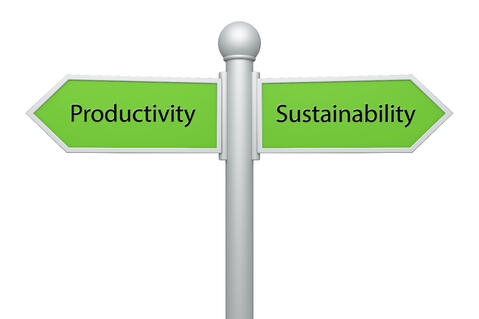
Once, commercial real estate benchmarking focused on identifying a space's productivity and its cost effectiveness. With the growth of the green movement in the CRE sector, exemplified by the popularity of LEED certification, benchmarks have changed. Today office users look at buildings on the basis of their environmental efficiency, and these commercial real estate benchmarking tools are not always directly correlated to economic efficiency.
The movement to green created quantum changes in how spaces get used. Square footages are shrinking, with the old benchmark of 225 square feet per employee being reduced by more than 50 percent to goals in the neighborhood of 100 square feet. Other changes include looking at energy efficiency as an end, instead of a means. These new focuses created cost savings and public relations benefits but ultimately harmed operations as too-green buildings hurt retention, morale and productivity.
Commercial Real Estate Benchmarking in the Green Age
The new approach to commercial real estate benchmarking looks at both productivity and environmental factors together in the same analysis. Some examples include:
-
Space vs. sound. While shrinking the amount of square feet per employee can yield occupancy cost and rental benefits, putting more people in the same area can increases noise levels to a point where employees find it hard to concentrate and work. By projecting sound in a new space or measuring levels in an existing space, companies can make necessary acoustic adjustments to make the space effective.
-
HVAC efficiency vs. health. One sure-fire way to reduce HVAC costs is to increase the sealing of a building's envelop. By keeping already-heated or already-cooled air inside and recirculating it, building systems consume less energy. However, constantly recirculating the same air can also lower indoor air quality, harming comfort and employee health. Benchmarking lets companies find the sweet spot where they maximize savings and comfort at the same time.
-
Efficiency vs. light levels. Another way to reduce energy consumption is to cover windows. Doing this darkens the office, reducing productivity and morale. Paying careful attention to light levels allows building managers to maximize energy savings while minimizing the impact on workers.
-
Square footage vs. headcount. Another way that companies can balance reduced space per employee is to become more creative in how they assign and use the space. Going from 225 to 100 square feet per worker can be shocking. If, however, that reduction in space is accompanied by telecommuting arrangements that allow 30 percent of employees to work from home, the effective reduction is less since there are fewer people actually in the office at any time.
While the advent of green building changed commercial real estate benchmarking, it did not change the fundamental way that workers and customers interact with and within buildings. By looking at benchmarks on multiple levels and paying attention to usability as much as environmental efficiency, every company can find its sweet spot.
Here are a few other articles to check out:
Green Commercial Real Estate Leasing
9 Benefits to LEED Certified Commercial Space
Six Ways to Make Any Office Into a Green Office
Subscribe to our blog for more CRE tips!!








